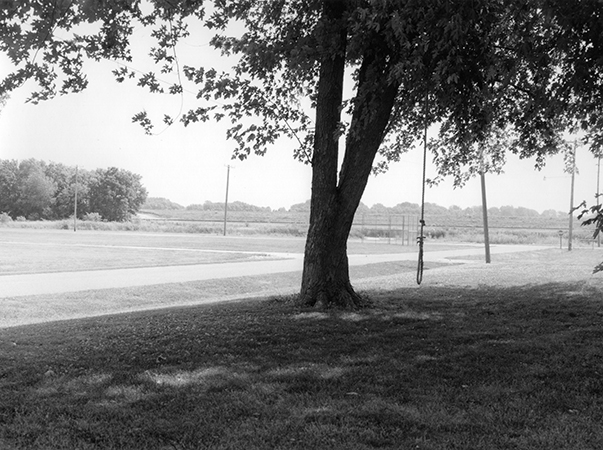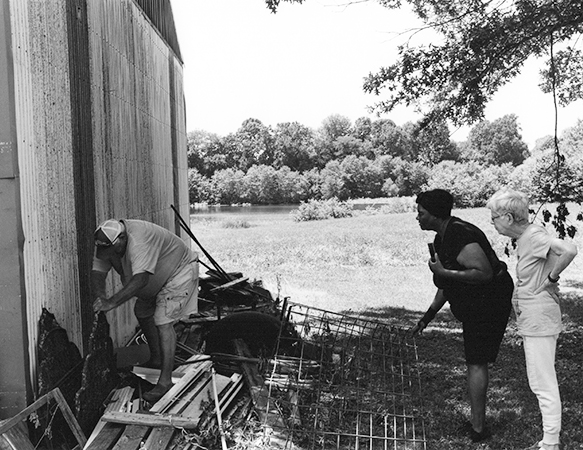CRITICAL PLACES: LEWIS COUNTY, MISSOURI
(2021)
The Lin Uprising of 1849
Herbert Aptheker's account of the Lewis County revolt, in American Negro Slave Revolts, is based on contemporaneous newspaper accounts. Unknown at the time were the recollections of W. K. Moore, a grandson of the enslaver on whose farm the revolt took place, which were published in the Missouri Historical Review in 1958.
The striking thing that we learn from Moore is that this rebellion was led by a woman. That contemporaneous accounts make no mention of that is a good example of how the role of women in slave revolts has largely been subsumed to those of men.
This woman, Lin, was the enslaved cook on W. K. Moore's grandfather's farm, the McCutchan farm, during his mother's childhood:
When I knew it as a small boy Lin's cave was a little mound, back of a truck patch, with a few rotting poles protruding from one side. Lin, the Negro cook in my grandfather's home, had dug out a hole, lined and roofed it with poles and dirt, and in it kept her "roots and 'arbs," as she called them, along with various trinkets and some mysterious powders believed to be effective in working charms and conjurings....
Moore goes on to recount that the insurrection was prompted by a vision had by Lin's grandson, Henry, to whom Lin ascribed prophetical powers. She interpreted his vision as a signal that they were to murder their enslavers and escape to freedom.
We often come across accounts of the use of magic and potions by the enslaved. (See Critical Places; The Margaret Bradley Conspiracy of 1803). Clearly Lin, with her "roots and 'arbs," and her dream interpretations, was one such person. And clearly she had a wide influence in the area because when it came time to rise up there were some 25 men, women, and children setting off to freedom.
As they gathered during the night on field near the McCutchan farm, the commotion awoke the McCutchans and an alert was sent out. By daybreak a force of some 30 men was on hand to suppress the rebellion.
Emboldened by drinking Lin's magical potions, the enslaved fearlessly confronted their enslavers. Shots were fired, one of the rebells, a man called John, fell dead, and then Lin and the others surrendered. I haven't been able to find anything on what happened to Lin in the aftermath of the revolt.
In the closest town, Canton, there is a historic Lincoln Colored School which had recently been restored by a retired nurse, Phyllis Dean. She brought me over to the Lewis County Historical Society, where several volunteers combed through old surveys and property records to locate the original McCutchan homestead. (The difficulty was that there are many McCutchan farms the area —exemplifying of how land has remained in the hands of the White people, thus excluding of Black ownership.) Phyllis was hesitant about coming with me visit to the farm, not feeling comfortable, as a Black woman, venturing that far out into the countryside. She finally agreed, bringing along a (White) friend.
Living on what had been the original McCutchan homestead is Dennis McCutchan. He'd never seen any evidence of Lin's cave but he pointed out that his large artificial pond covered the area that had been the slave quarters. He asked me if he should feel bad about that?

4th of July. La Grange, Lewis County. Missouri. 2022.

Lewis County Historical Society. Canton, Missouri. 2022.

Canton. Lewis County, Missouri. 2022.

McCutchan Farm. Lewis County, Missouri. 2022.